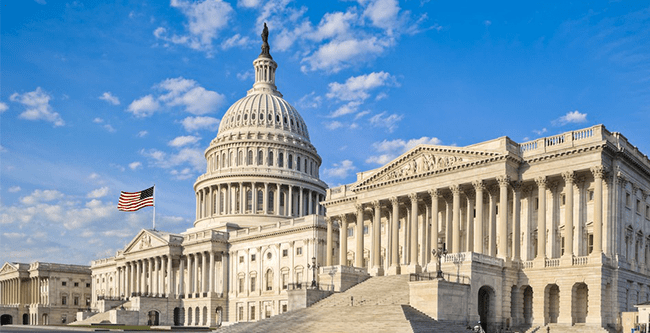Months of uncertainty over US interest rates have ended as the Federal Reserve hiked the rate for the second time this year.
The Fed – America’s central bank – shifted the rate up 0.25% to hit the target of between 1% and 1.25%.
Us interest rates are now at the highest since 2008, when they were slashed in the aftermath of the global financial crisis.
The Fed explained continuing ‘moderate’ economic growth and increasing employment generated the confidence needed to raise the rate.
In a statement, members of the rate-setting Federal Open Market Committee also argued that falling inflation and a rise in household spending signalled the economy was strong enough to support the hike.
Waiting for new norm
“The committee continues to expect that, with gradual adjustments in the stance of monetary policy, economic activity will expand at a moderate pace, and labor market conditions will strengthen somewhat further. Inflation on a 12-month basis is expected to remain somewhat below 2% in the near term but to stabilize around the committee’s 2% objective over the medium term,” said the statement.
“Near term risks to the economic outlook appear roughly balanced, but the committee is monitoring inflation developments closely.”
Analysts had expected the rise before now but feared inflation would influence the Fed’s thinking.
Committee chair Janet Yellen seem unconcerned by the rise and has indicated she expects the new cost of living norm to eventually settle around 3%.
BoE watching inflation
Meanwhile, the Bank of England’s policy makers have also met and agreed to keep interest rates pegged at 0.25%.
Although the bank kept rates unmoved, three of the eight committee members voted for a rise, but the measure was carried 5-3.
Inflation is a worry in the UK as well – with the latest annual increase showing a 2.9% rise, which is the highest the cost of living has reached for four years.
“The May Inflation Report depended importantly on three main judgements,” said a statement.
“That the lower level of sterling continues to boost consumer prices broadly as projected, and without adverse consequences for inflation expectations further ahead; that regular pay growth remains modest in the near term but picks up significantly over the forecast period; and that more subdued household spending growth is largely balanced by a pickup in other components of demand.”
